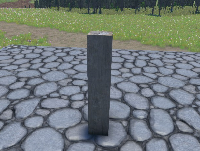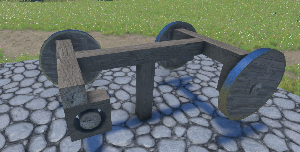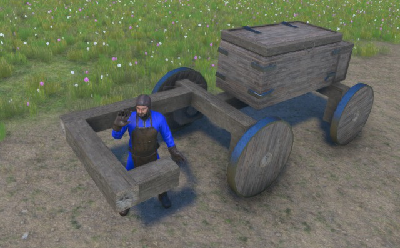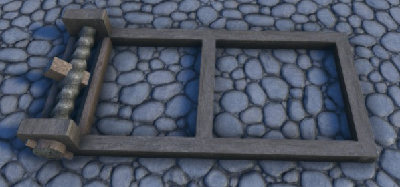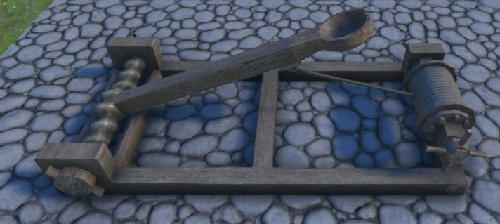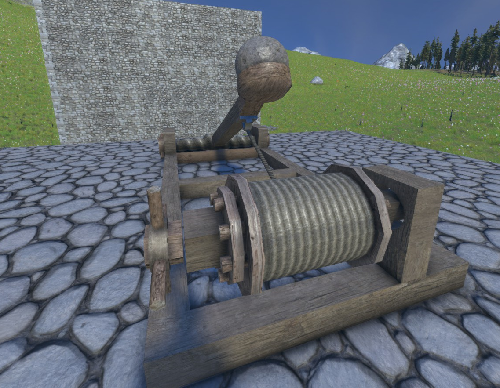Engineering: Difference between revisions
(Ok? / Look at?) |
CptTwinkie (talk | contribs) mNo edit summary |
||
| (4 intermediate revisions by the same user not shown) | |||
| Line 1: | Line 1: | ||
{{ | {{SEO|image_url=http://www.medievalengineerswiki.com/images/7/70/CataFun.png|description=Within Medieval Engineers there is actually an engineering aspect implemented while dealing with the smaller dynamic block building mechanics of the game. One of the first tasks a new player will come across is the difficulty of building a cart. This can be confusing for new players trying to understand how to properly build a working cart.}} | ||
Within Medieval Engineers there is actually an engineering aspect implemented while dealing with the smaller dynamic block building mechanics of the game. One of the first tasks a new player will come across is the difficulty of building a cart. This can be | {{Version <!-- Do not change the version until the entire page is up-to-date --> | ||
|release=0|major=5|minor=x|suppress=true}} | |||
Within Medieval Engineers there is actually an engineering aspect implemented while dealing with the smaller dynamic block building mechanics of the game. One of the first tasks a new player will come across is the difficulty of building a cart. This can be confusing for new players trying to understand how to properly build a working cart. | |||
==Cart Example== | |||
To get started with building your first cart you are going to need a couple of items. Some {{Small_Image_Link|Timber.png|Timber{{!}}Timbers}}, at least four {{Small_Image_Link|CatchBlockSmall.png|Catch Block{{!}}Catch Blocks}} and at least four {{Small_Image_Link|WheelMediumSmall.png|Wheel{{!}}Wheels}}. If you are unsure if you unlocked the knowledge to craft these items then simply check the {{Small_Image_Link|Medieval Engineers Research Tree.png|Medieval Engineers Research Tree/0.4}}. | |||
1. After acquiring the components needed you can start to form a cart. The easiest way to start is by creating a support beam to work off of. | |||
[[File:SupportLeg.png]] | [[File:SupportLeg.png]] | ||
2. Build the frame of the cart. Imagine it similar to how a basic car frame would be shaped with wheels. Be sure the Wheels are facing the correct way on the Catch Blocks. Improper wheel placement will result in rotation problems. | |||
[[File:CartWheels.png]] | [[File:CartWheels.png]] | ||
Lastly you can customize your cart | |||
3. Lastly, you can customize your cart for any task. | |||
[[File:CartFinished.png]] | [[File:CartFinished.png]] | ||
==Catapult== | ==Catapult Example== | ||
There are stationary and mobile catapults | There are stationary and mobile catapults. A mobile catapult is like a stationary one built onto a cart. The example catapult below will be stationary. The resources needed to build this catapult will be one {{Small_Image_Link|CatapultHead.png|Catapult Bucket}}, one {{Small_Image_Link|RopePowerSmall.png|Rope Torsion Spring}}, one {{Small_Image_Link|RopeEndingSmall.png|Rope Eye Plate}}, one {{Small_Image_Link|TurnCrossSmall.png|Hand Crank Wheel}} and one {{Small_Image_Link|RopeDrumAloneSmall.png|Rope Drum}} with a bunch of {{Small_Image_Link|Timber.png|Timber{{!}}Timbers}}. | ||
1. Start by building the basic frame. | |||
[[File:Cata1.png]] | [[File:Cata1.png]] | ||
2. Attach the arm and the bucket on the end with the eye plate at the very end of the timber arm. Place a timber and catch block support to hold the rope drum, along with the hand crank wheel. | |||
[[File:Cata2.png]] | [[File:Cata2.png]] | ||
3. Use a rope to connect the eye plate to the rope drum. Crank the arm down to prepare the catapult for loading and firing. | |||
[[File:Cata3.png]] | [[File:Cata3.png]] | ||
4. Load the catapult by either pressing F on the bucket if you have a {{Small_Image_Link|CatapultProjectileLarge.png|Large Projectile}} in your inventory or manually load a projectile into the bucket by picking it from the ground using the left mouse button. | |||
[[File:CataFun.png]] | [[File:CataFun.png]] | ||
Test your catapult and experiment with different loading and firing techniques. | |||
[[Category:Building]] | [[Category:Building]] | ||
Latest revision as of 18:45, 17 August 2018
| Version: | 0.5 |
Within Medieval Engineers there is actually an engineering aspect implemented while dealing with the smaller dynamic block building mechanics of the game. One of the first tasks a new player will come across is the difficulty of building a cart. This can be confusing for new players trying to understand how to properly build a working cart.
Cart Example
To get started with building your first cart you are going to need a couple of items. Some ![]() Timbers, at least four
Timbers, at least four ![]() Catch Blocks and at least four
Catch Blocks and at least four ![]() Wheels. If you are unsure if you unlocked the knowledge to craft these items then simply check the
Wheels. If you are unsure if you unlocked the knowledge to craft these items then simply check the ![]() Medieval Engineers Research Tree/0.4.
Medieval Engineers Research Tree/0.4.
1. After acquiring the components needed you can start to form a cart. The easiest way to start is by creating a support beam to work off of.
2. Build the frame of the cart. Imagine it similar to how a basic car frame would be shaped with wheels. Be sure the Wheels are facing the correct way on the Catch Blocks. Improper wheel placement will result in rotation problems.
3. Lastly, you can customize your cart for any task.
Catapult Example
There are stationary and mobile catapults. A mobile catapult is like a stationary one built onto a cart. The example catapult below will be stationary. The resources needed to build this catapult will be one ![]() Catapult Bucket, one
Catapult Bucket, one ![]() Rope Torsion Spring, one
Rope Torsion Spring, one ![]() Rope Eye Plate, one
Rope Eye Plate, one ![]() Hand Crank Wheel and one
Hand Crank Wheel and one ![]() Rope Drum with a bunch of
Rope Drum with a bunch of ![]() Timbers.
Timbers.
1. Start by building the basic frame.
2. Attach the arm and the bucket on the end with the eye plate at the very end of the timber arm. Place a timber and catch block support to hold the rope drum, along with the hand crank wheel.
3. Use a rope to connect the eye plate to the rope drum. Crank the arm down to prepare the catapult for loading and firing.
4. Load the catapult by either pressing F on the bucket if you have a ![]() Large Projectile in your inventory or manually load a projectile into the bucket by picking it from the ground using the left mouse button.
Large Projectile in your inventory or manually load a projectile into the bucket by picking it from the ground using the left mouse button.
Test your catapult and experiment with different loading and firing techniques.
